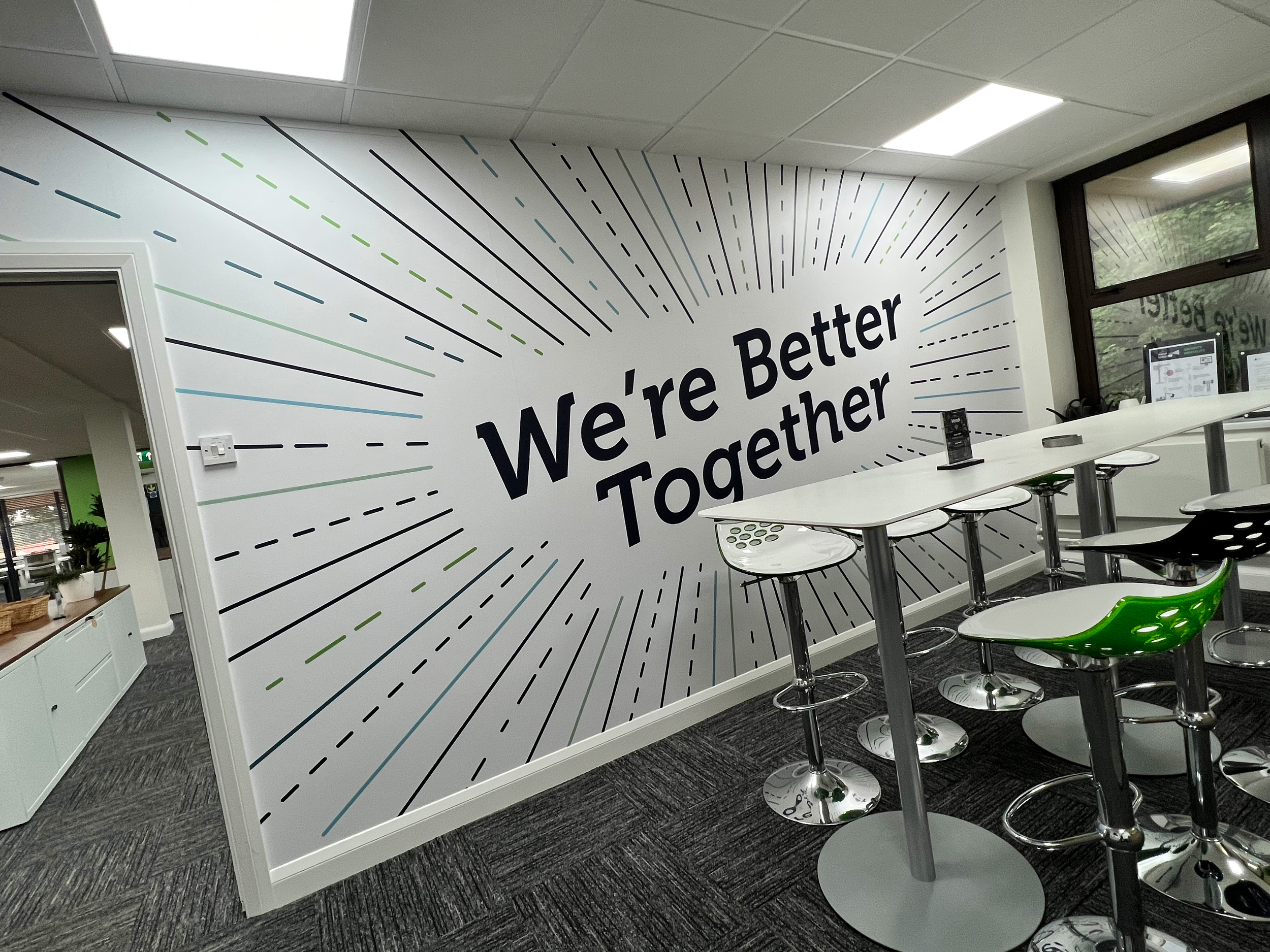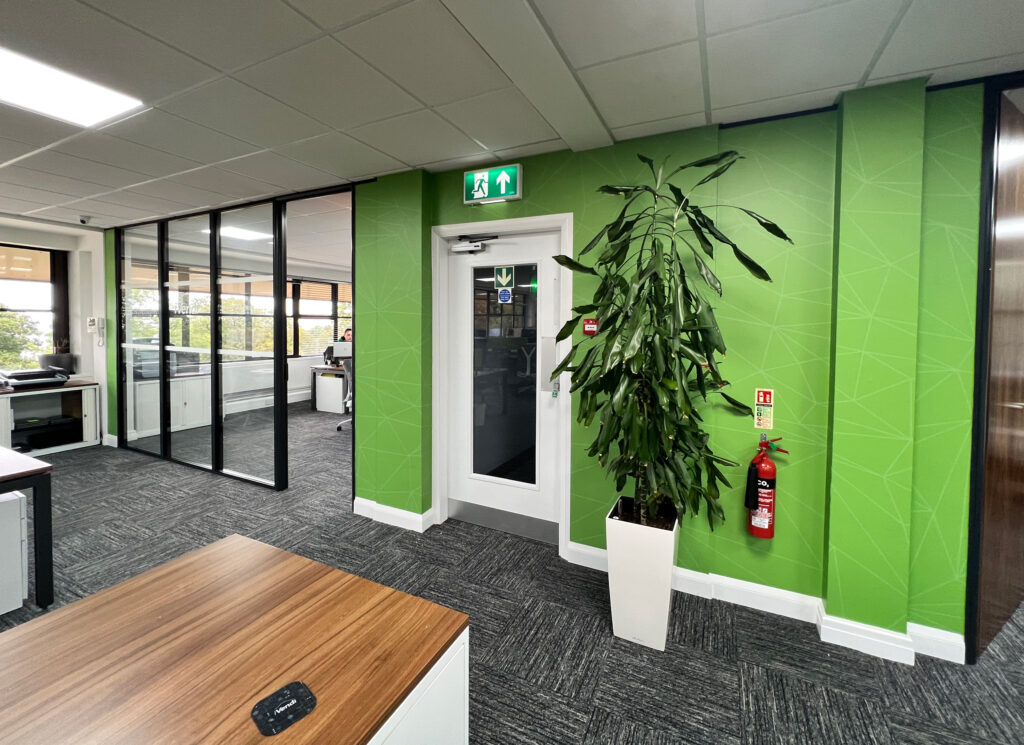
Considerations wall murals
Using Wall Murals
In commercial interior design there is a fine balance to strike when creating the perfect space; you have to please the client, consider the users of the space, and you want to make sure that it’s memorable. There are many ways of meeting a brief, and wall graphics may appear in some of those scenarios. We think that not considering using wall graphics would be a mistake. Why do we think that? After installing wall art into hundreds of spaces, large and small, we have seen the reaction of users and clients first hand. Users often comment on the transformation a mural makes to a space. When you take a blank space and apply an image of a forest or a sandy beach, people are transported into a totally different world. There is something about images of nature, and fun and colourful illustrations that have a positive psychological effect. They are also a quick and cost-effective way to inject more personality than paint colours or wallpapers alone.
Assuming that you are now convinced that wall murals are a great idea, here are some of the issues to consider when using them. Let’s begin with the thorny issue of cost. There are always a variety of cost options for what may look like the same product. However, there are a number of reasons for the price difference which we will explore below. The right product is not only a mural that looks good, but one that ticks two other boxes. The first is the type of product needed for a particular space, and the second is compliance with fire and building regulations for the building.

What is the right product?
When trying to ascertain which product is the right product for your project, there are some key questions to ask. For example, where is the mural to be situated? Is it in a high-traffic area, a humid environment, or is it a feature wall in rented space? Is it a short-term or permanent feature? The answers would lead to a number of different material options the mural could be printed on. There is paper or fabric-based wallpaper, short-term removable self-adhesive vinyl and long-term self-adhesive vinyl. There are pros and cons to each, however, a self-adhesive vinyl product is often the most flexible solution. Vinyl materials can be over-laminated, adding a clear layer of film over the top of the ink which protects the print from scuffs and scratches and makes it waterproof.
Compliance
There is also the important matter of choosing the right product to comply with building and fire safety regulations. In open spaces and thoroughfares there are stricter regulations than in an enclosed room. It is always best to check the regulations for your building and ensure that the materials used match those regulations.
Cost Driven
When a project has a tight budget there is always the temptation to specify based on cost, however, as with any purchase, there is always a trade-off between specification and price. There may be a cheaper product, but the trade-off might be a reduction in quality, or it could fall short on regulations, or be inappropriate for the space. There will also be a cost difference between using a specialist company and buying a mural from an ebay vendor and having a decorating contractor install the mural. The question to consider is whether it is better to save money using a potentially incorrect product or to use a smaller amount of material from a reputable company with a proven product.
The Right Installation Team
When you have chosen the right kind of product, who do you get to install your murals and wall art? In our experience there are three kinds of installers; there are painter-decorators who have years of experience installing wallpaper, but few have experience with modern self-adhesive wall murals. There are also versatile signage company installers who have experience installing self-adhesive vinyl, but sometimes lack the finishing skills required for interior design work. Finally, there are the specialists, who have the technical skills to install around complex shapes like air-conditioning units, columns and tricky angles, and experience of working with interior designers.They are used to working with other subcontractors on site, whilst maintaining a clear workspace and a professional attitude. There may be health and safety compliance issues with regards to the installers; do they require CRB/DBS checks if working in areas with children or vulnerable adults? If working on a new build, do the installers require CSCS cards or other trade health and safety certification? These are all issues to consider when employing the right installation team.

The Right Project Management Team
If the installation team can make or break a project, the project management team can cause a project to falter before the fitters get anywhere near it. This means it is important to choose a company that fully understands working with commercial interior designers, and the programming stresses that can come with site deadlines. Having worked on a huge variety of projects ranging from new builds, refurbishments and simple enhancements, we understand that deadlines can move backwards, as other elements of the projects take longer than expected, squeezing the programme.
There are a few questions for the commercial designer to consider. Does the supplier have a cohesive framework for delivering the project? Do they understand their part in the programme? Are you sure they can deliver by the project completion date? Do the suppliers understand that they are required to be flexible on timing? How do they solve problems they encounter on the project? Can the team integrate their programme with that of other services providers like joiners and electrical contractors? It is also worth asking if there will be extra costs for last minute delays, out of hours work, or date changes.
Whilst this was written by a wall mural supply and installation company, this is not an advert for our services, it is written with a view to inform interior designers about product selection and with a view to improving the sector as a whole.